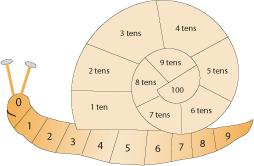Last week we looked at making 2 digit numbers using tens and ones. We used our tens frames and counters to make 2 digit numbers.
We also watched these videos. Here they are again, along with the accompanying worksheet, if you and your child want to revise the content again.
These slides show us how we can use cubes to make 2 digit numbers too. Let’s count together.
Can you see what happened to the ten cubes? They have joined together to make a ten. 10 ones is equal to 1 ten. Now we have 1 ‘ten’ lets make another. Let’s carry on counting. Grown ups please emphasise how the 2digit numbers are made up. I have written what to say under the next few slides.
1 ten and 1 one equals 11
1 ten and 3 ones equals 13
2 tens equals 20.
10 + 10 = 20
We can count in tens, Each time adding on ten more
10,20,
This video will also help to explain the concept to your child.
Here are some interactive games for your child to play to reinforce the concept of 2 digit numbers being made of tens and ones.
IXL – Count tens and ones – up to 20 (Year 1 maths practice)
IXL – Show numbers on ten frames – up to 20 (Year 1 maths practice)
This game is about counting up to 100.

You will need the board which you can download here, an ordinary dice and a pair of matching counters for each player.
- You could copy a simple version of this snail if you cannot print it off,
- You could use your number cards to six and pull one out of a bag instead of rolling a dice, if you do not have a dice, or follow this link for an online dice
- https://www.random.org/dice/?num=1
- For counters you could use coins, small toys, buttons, cereal pieces such as ‘Cheerios’ or even pieces of pasta!
How to play the game:
To start put both your counters on “0” – which is the snail’s eye!
The first player throws the dice and moves one of their counters that number along the snail’s body. Take turns at throwing the dice.
After you get to “9” the first counter goes back to “0” and the second counter goes onto “1 ten”.
Go on moving the first counter along the snail’s body and moving the second counter to the next “ten” every time you get to the end and go from 9 to 0.
The winner is the first to reach “100”.


























